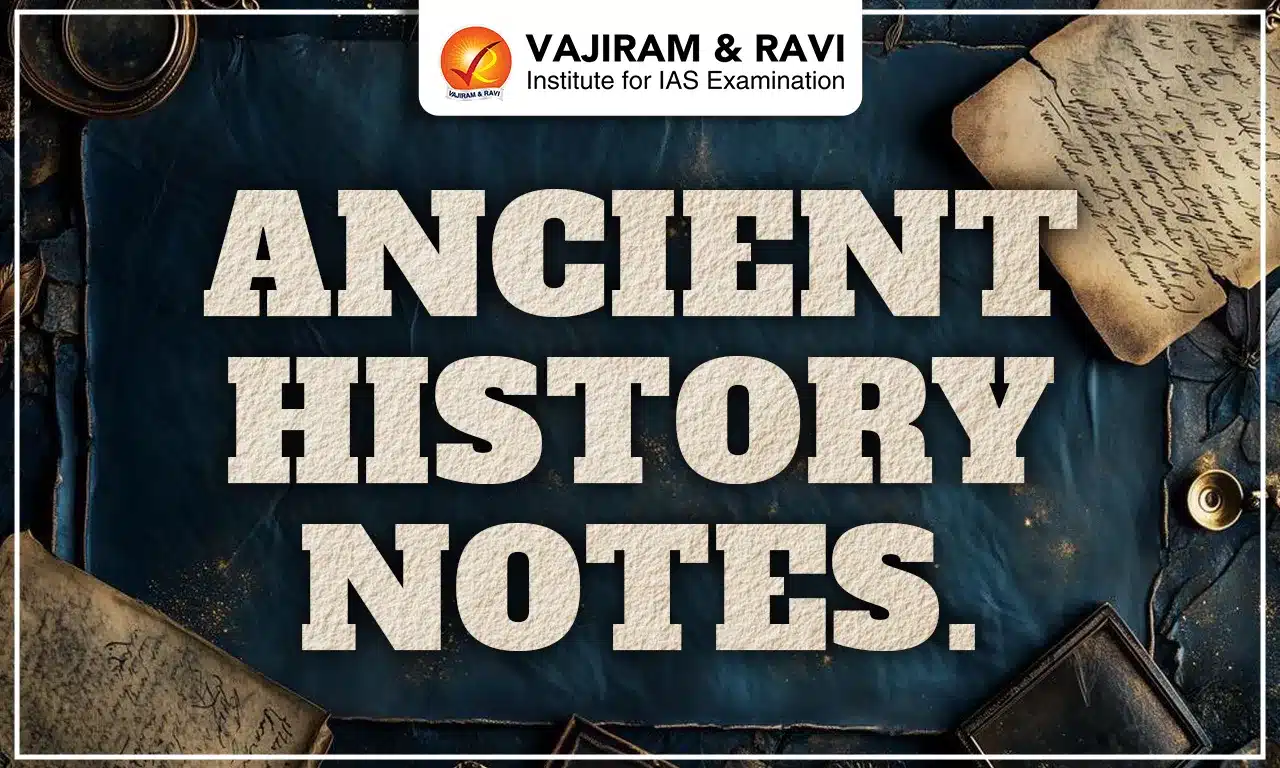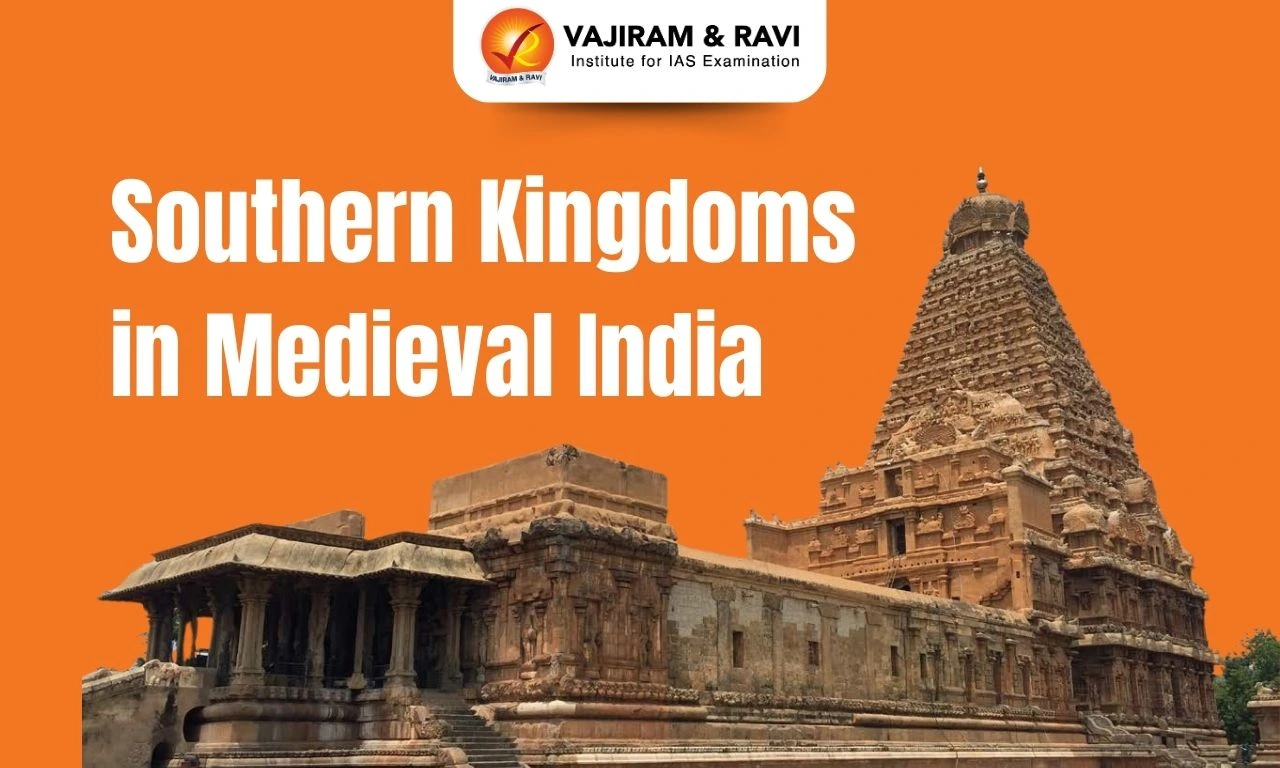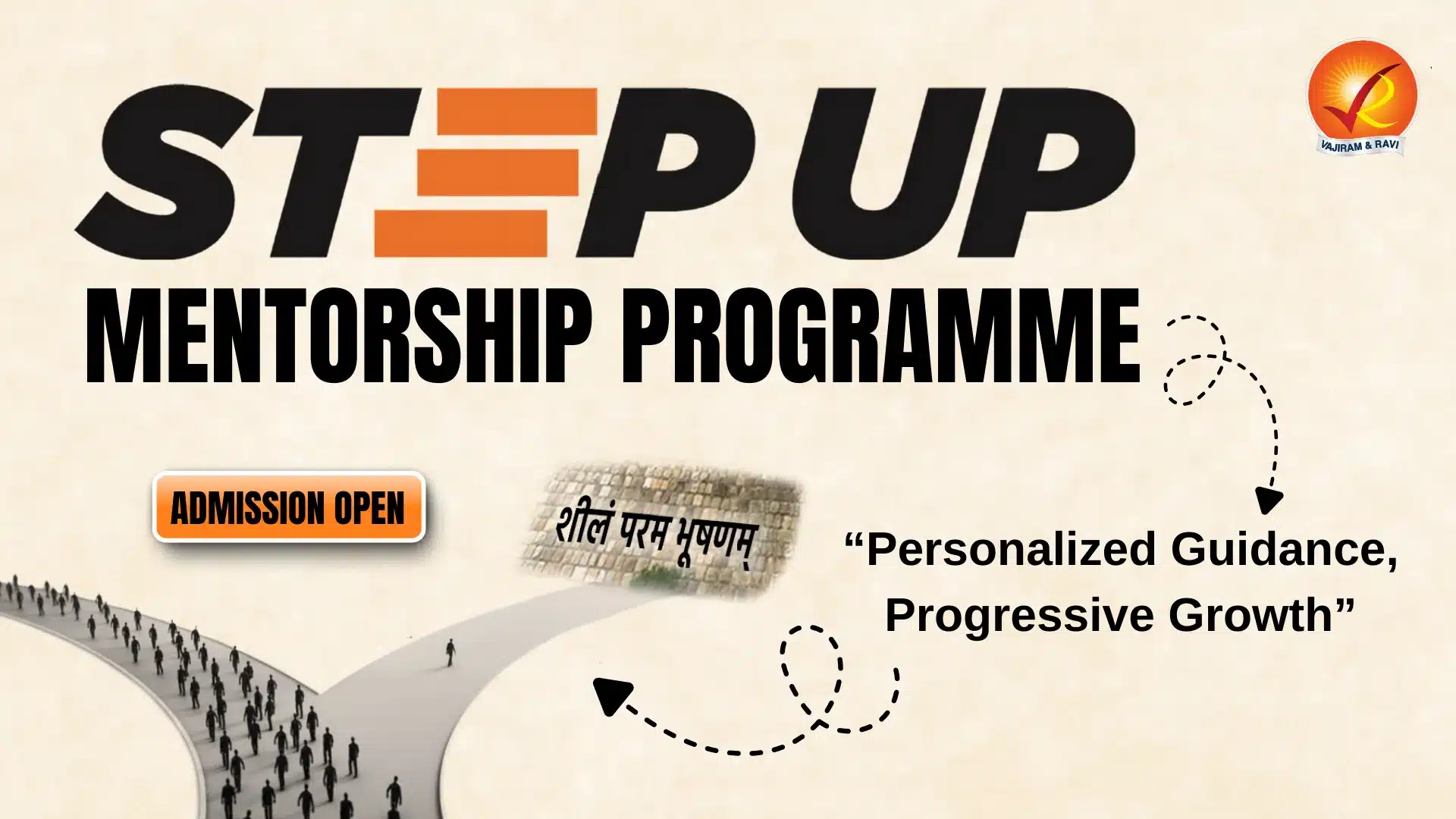Ancient History Notes for UPSC includes the study materials in PDF formats which cover the topics relevant to the UPSC CSE 2025. The UPSC Ancient History Notes includes detailed study material for ancient civilizations, cultures, dynasties, art, architecture, religion, and socio-economic aspects. Downloading these notes can be beneficial for the aspirants as they are in an easy-to-access organised format for self-study or revision purposes. Keep reading the article to get the download link for Ancient History Notes for UPSC PDF.
UPSC Ancient History Notes
UPSC Ancient History Notes by Vajiram and Ravi are well-crafted and updated notes. Prepared by the best faculty and subject experts, the Ancient History Notes for UPSC includes all the important topics with easy access to the aspirant.
UPSC Ancient History
UPSC Ancient History plays an important role in UPSC CSE 2025, including the timeline from the early Indus Valley Civilization to the Gupta Empire. To help aspirants in the preparation, check out the topics mentioned in UPSC Syllabus 2025 below which are included in the Ancient History Notes for UPSC:
Indian Prehistory - Culture, Tools and Sites
This section explores India's prehistoric eras, highlighting key periods such as the Paleolithic, Mesolithic, Neolithic, Chalcolithic, and Megalithic ages. It features significant archaeological sites including Bhimbetka, Burzahom, and prehistoric rock paintings.
- Indian Prehistory - Culture, Tools and Sites
- Palaeolithic Age - Time period, Tools, Sites, Characteristics
- Bhimbetka
- Mesolithic Age - Tools, Time Period, Mesolithic Sites in India
- Neolithic Age - Tools, Time Period, Neolithic Sites in India
- Burzahom
- Chalcolithic Age
- Megalithic Culture
- Prehistoric Rock Paintings
- Palaeolithic Age - Time period, Tools, Sites, Characteristics
Indus Valley Civilization
These notes include the urban planning, architecture, and cultural aspects of the Indus Valley Civilization, one of the world’s earliest urban centres.
- Indus Valley Civilization
- Town Planning of Harappan Civilization
- Indus Valley Civilization Sites - Location and Their Significance
- Decline of Indus Valley Civilization
- Alexander Cunningham
Vedic Period
These UPSC Ancient History Notes include the religious, social, and political systems during the Vedic era, focusing on texts like the Vedas and Upanishads.
- Vedic Period - Social, Economic, Political and Religious Life
Mahajanapadas and the Magadha Empire
These UPSC Ancient History Notes include the rise of powerful states such as the Mahajanapadas and their role in shaping India’s early political landscape, with a special focus on the Magadha Empire.
- Mahajanapadas
- Persian and Greek Invasions
- Magadha Empire
Buddhism
Buddhism UPSC Notes examines Buddhism, covering essential aspects such as the life and teachings of Buddha, the Buddhist Councils, and various sects including Mahayana, Hinayana, Vajrayana, and Theravada.
- Buddhism
- Buddha - Life and his teachings
- Buddhist Councils
- Sects of Buddhism
- Difference between Mahayana and Hinayana
- Vajrayana Buddhism
- Theravada Buddhism
- Bodhisattva
Jainism
Jainism UPSC Notes explores Jainism, highlighting key aspects such as the life of Vardhamana Mahavira, the Jain Councils, and various sects. It also covers the differences between Jainism and Buddhism, as well as the 24 Tirthankaras of Jainism.
- Jainism
- Vardhamana Mahavira
- Jain Councils
- Sects of Jainism
- Difference between Jainism and Buddhism
- 24 Tirthankaras of Jainism
Mauryan Empire
An important chapter in UPSC Ancient History Notes covers the rise, expansion, and governance under Chandragupta Maurya and Ashoka the Great.
- Mauryan Empire
- Mauryan Administration
- Ashoka
- Kautilya's Arthashastra
Post-Mauryan Period
This section of the Ancient History Notes for UPSC included the developments after the Mauryan Empire, including the emergence of regional powers like the Kushans and Shakas, and the spread of Buddhism and Jainism.
- Post-Mauryan Period
- Indo-Greeks
- Sangam Age
- Satavahana Dynasty
- Saka Era
- Parthians
- Kushan Empire
- Kanishka
- Sunga Dynasty
- Kanva Dynasty
- Chedi Dynasty
Gupta Empire
This period is often considered the Golden Age of India, marking the significant advancements in science, art, and literature under the rule of Samudragupta and Chandragupta II.
- Gupta Empire
- Gupta Administration
- Samudragupta
- Vakataka Dynasty
Post-Gupta Period
Post-Gupta Period UPSC notes section examines the Post-Gupta Period, highlighting significant dynasties such as the Chalukyas of Badami, the Pushyabhuti Dynasty, Harshavardhana, and the Pallava Dynasty. It delves into the historical and cultural developments of these eras.
- Post-Gupta Period
- Chalukyas of Badami
- Pushyabhuti Dynasty
- Harshavardhana
- Pallava Dynasty
Foreign Travellers who visited India
This section of UPSC Notes explores foreign travellers who visited India, featuring notable figures such as Marco Polo, Al Beruni, Fa Hien, Hiuen Tsang, and Ibn Battuta. It highlights their contributions to the understanding of India's historical and cultural landscape.
- Foreign Travellers who visited India
- Marco Polo
- Al Beruni
- Fa Hien
- Hiuen Tsang
- Ibn Battuta
Importance of Ancient History Notes for UPSC
- These Ancient History Notes for UPSC PDFs cover essential topics that will strengthen your understanding.
- To excel in the UPSC CSE Exam 2025, download these UPSC Ancient History Notes for organised format for self study or revision purpose.
Last updated on December, 2025
→ Check out the latest UPSC Syllabus 2026 here.
→ Join Vajiram & Ravi’s Interview Guidance Programme for expert help to crack your final UPSC stage.
→ UPSC Mains Result 2025 is now out.
→ UPSC Notification 2026 is scheduled to be released on January 14, 2026.
→ UPSC Calendar 2026 is released on 15th May, 2025.
→ The UPSC Vacancy 2025 were released 1129, out of which 979 were for UPSC CSE and remaining 150 are for UPSC IFoS.
→ UPSC Prelims 2026 will be conducted on 24th May, 2026 & UPSC Mains 2026 will be conducted on 21st August 2026.
→ The UPSC Selection Process is of 3 stages-Prelims, Mains and Interview.
→ UPSC Result 2024 is released with latest UPSC Marksheet 2024. Check Now!
→ UPSC Prelims Result 2025 is out now for the CSE held on 25 May 2025.
→ UPSC Toppers List 2024 is released now. Shakti Dubey is UPSC AIR 1 2024 Topper.
→ UPSC Prelims Question Paper 2025 and Unofficial Prelims Answer Key 2025 are available now.
→ UPSC Mains Question Paper 2025 is out for Essay, GS 1, 2, 3 & GS 4.
→ UPSC Mains Indian Language Question Paper 2025 is now out.
→ UPSC Mains Optional Question Paper 2025 is now out.
→ Also check Best IAS Coaching in Delhi
Ancient History Notes for UPSC FAQs
Q1. How to make notes of ancient history for UPSC?+
Q2. Which are the best notes for UPSC?+
Q3. Is Ancient History important for UPSC?+
Q4. Does Ancient History come in mains UPSC?+
Q5. Is NCERT sufficient for UPSC history?+
Tags: Ancient History Notes Ancient History Notes for UPSC UPSC

















